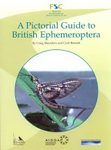Field / Identification Guide
By: Ron Thresher(Author)
228 pages, 394 colour photos, 24 b/w illustrations, 21 maps
![Tasmanian Mayflies Tasmanian Mayflies]()
Click to have a closer look
About this book
Contents
Customer reviews
Biography
Related titles
About this book
Mayflies are one of the world's most diverse, abundant and important aquatic insects. Famous for their brief adult life spans, mayflies play a key role in the ecology of aquatic and associated terrestrial ecosystems, and are critical bioindicators of ecosystem health.
Sitting at the southern limit of Australia's temperate zone, Tasmania is home to a diverse array of mayflies and renowned fisheries based on them. The state's storied 'Lambda Dun' hatches bring fishers from all over Australia to try their luck each summer on its rivers and ponds. Yet little is known about their behaviour and ecology, and more than half of the mayflies in Tasmania have never been described.
This extensively illustrated book is the first synthesis of the biology of south-east Australia's mayflies, with a focus on those in Tasmania. It combines information gleaned from scientific literature as well as more than 30 years of the author's studies and flyfishing experiences. It explores the biology, identification, conservation, ecology and behaviour of mayflies, and also includes fishing strategies and fly patterns.
Tasmanian Mayflies is an essential information source for Australia's aquatic biologists and for flyfishers, novice and experienced alike, who chase the insects and the fish that feed on them.
Contents
1. Why mayflies?
2. The biology of mayflies
3. Identifying mayflies
4. Keys to the mayfly families of south-east Australia
5. Primitive Minnow Mayflies - Oniscigastridae
6. Primitive Minnow Mayflies - Nesameletidae
7. Small Minnow Mayflies - Baetidae
8. Prong-gilled Mayflies - Leptophlebiidae
9. Small Squaregills - Caenidae
10. The status of mayflies in Tasmania
11. Mayfly hatches - where, when and what
12. Fly patterns that have worked for me
Glossary
Further reading
Index
Customer Reviews
Biography
Ron Thresher has worked for over 30 years on the behavioural ecology of aquatic animals. He has published more than 100 scientific papers, plus books and patents, and occasionally catches a trout.
Field / Identification Guide
By: Ron Thresher(Author)
228 pages, 394 colour photos, 24 b/w illustrations, 21 maps
"[...] Overall, this a great resource, synthesising a large amount of research in addition to Ron’s considerable personal contribution. It is a fascinating and very readable account of this important order of insects. I suspect it will appeal to the scientifically minded angler as well as the entomologist and will be a standard reference for a long time."
– Keith Martin-Smith, The Tasmanian Naturalist 145, 2023



































